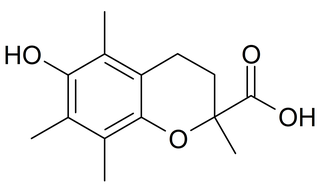Antioxidants are compounds that inhibit oxidation, a chemical reaction that can produce free radicals and chain reactions that may damage the cells of organisms. Antioxidants such as thiols or ascorbic acid may act to inhibit these reactions. To balance oxidative stress, plants and animals maintain complex systems of overlapping antioxidants, such as glutathione.

Five-spice powder is a spice mixture of five or more spices used predominantly in almost all branches of Chinese cuisine. It is also used in Hawaiian cuisine and Vietnamese cuisine. The five flavors of the spices refers to the five traditional Chinese elements.

Prunus is a genus of trees and shrubs, which includes the fruits plums, cherries, peaches, nectarines, apricots, and almonds.

JT Storage, Inc. was a maker of inexpensive IDE hard drives for personal computers based in San Jose, California. It was founded in 1994 by "Jugi" Tandon—the inventor of the double-sided floppy disk drive and founder of Tandon Corporation—and Tom Mitchell, a co-founder of Seagate and former president and Chief Operating Officer of both Seagate and Conner Peripherals.

Melatonin is a natural product found in plants and animals. It is primarily known in animals as a hormone released by the pineal gland in the brain at night, and has long been associated with control of the sleep–wake cycle.

Polyphenols are a large family of naturally occurring organic compounds characterized by multiples of phenol units. They are abundant in plants and structurally diverse. Polyphenols include flavonoids, tannic acid, and ellagitannin, some of which have been used historically as dyes and for tanning garments.

Cyclic voltammetry (CV) is a type of potentiodynamic electrochemical measurement. In a cyclic voltammetry experiment, the working electrode potential is ramped linearly versus time. Unlike in linear sweep voltammetry, after the set potential is reached in a CV experiment, the working electrode's potential is ramped in the opposite direction to return to the initial potential. These cycles of ramps in potential may be repeated as many times as needed. The current at the working electrode is plotted versus the applied voltage to give the cyclic voltammogram trace. Cyclic voltammetry is generally used to study the electrochemical properties of an analyte in solution or of a molecule that is adsorbed onto the electrode.
Boricua College is a private college in New York City. The college was designed to serve the education needs of Puerto Ricans and other Hispanics and was founded by Victor G. Alicea and several others.

The açaí palm, Euterpe oleracea, is a species of palm tree (Arecaceae) cultivated for its fruit, hearts of palm, leaves, and trunk wood. Global demand for the fruit has expanded rapidly in the 21st century, and the tree is cultivated for that purpose primarily.
TEAC Corporation is a Japanese electronics manufacturer. TEAC was created by the merger of the Tokyo Television Acoustic Company, founded in 1953, and the Tokyo Electro-Acoustic Company, founded in 1956.

In biochemistry, ABTS is a chemical compound used to observe the reaction kinetics of specific enzymes. A common use for it is in the enzyme-linked immunosorbent assay (ELISA) to detect the binding of molecules to each other.
Oxygen radical absorbance capacity (ORAC) was a method of measuring antioxidant capacities in biological samples in vitro. Because no physiological proof in vivo existed in support of the free-radical theory or that ORAC provided information relevant to biological antioxidant potential, it was withdrawn in 2012.
ORAC or Orac may refer to:

A polyphenol antioxidant is a hypothetical type of antioxidant containing a polyphenolic substructure and studied in vitro. Numbering over 4,000 distinct species mostly from plants, polyphenols may have antioxidant activity in vitro, but are unlikely to be antioxidants in vivo. Hypothetically, they may affect cell-to-cell signaling, receptor sensitivity, inflammatory enzyme activity or gene regulation, although high-quality clinical research has not confirmed any of these possible effects in humans as of 2020.

The Folin–Ciocâlteu reagent (FCR) or Folin's phenol reagent or Folin–Denis reagent, also called the gallic acid equivalence method (GAE), is a mixture of phosphomolybdate and phosphotungstate used for the colorimetric in vitro assay of phenolic and polyphenolic antioxidants. It is named after Otto Folin, Vintilă Ciocâlteu, and Willey Glover Denis. The Folin-Denis reagent is prepared by mixing sodium tungstate and phosphomolybdic acid in phosphoric acid. Folin–Ciocalteu reagent is just a modification of the Folin-Denis reagent. The modification consisted of the addition of lithium sulfate and bromine to the phosphotungstic-phosphomolybdic reagent.

Trolox is a water-soluble analog of vitamin E sold by Hoffman-LaRoche. It is an antioxidant like vitamin E and it is used in biological or biochemical applications to reduce oxidative stress or damage.
The Trolocks equivalent antioxidant capacity (TEAC) assay measures the antioxidant capacity of a given substance, as compared to the standard, Trolox. Most commonly, antioxidant capacity is measured using the ABTS Decolorization Assay. Other antioxidant capacity assays which use Trolox as a standard include the diphenylpicrylhydrazyl (DPPH), oxygen radical absorbance capacity (ORAC) and ferric reducing ability of plasma (FRAP) assays. The TEAC assay is often used to measure the antioxidant capacity of foods, beverages and nutritional supplements.

Lambertianin C is an ellagitannin.

Sanguiin H-6 is an ellagitannin.












